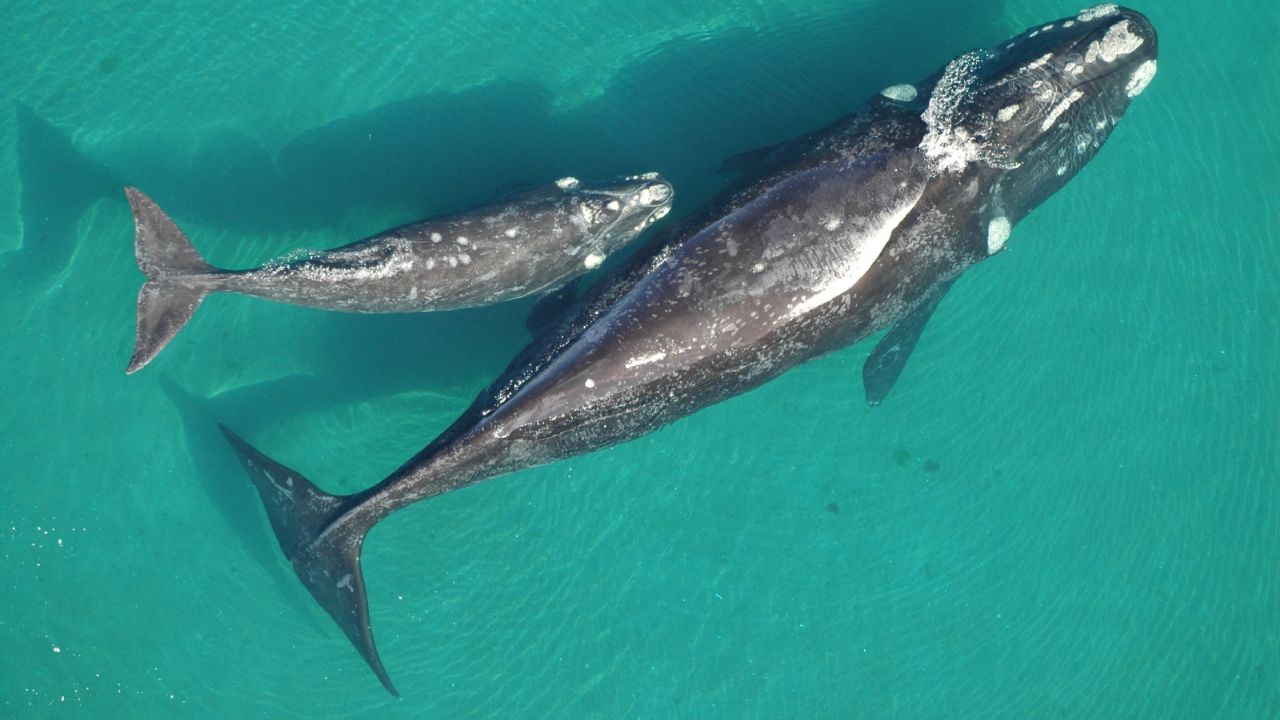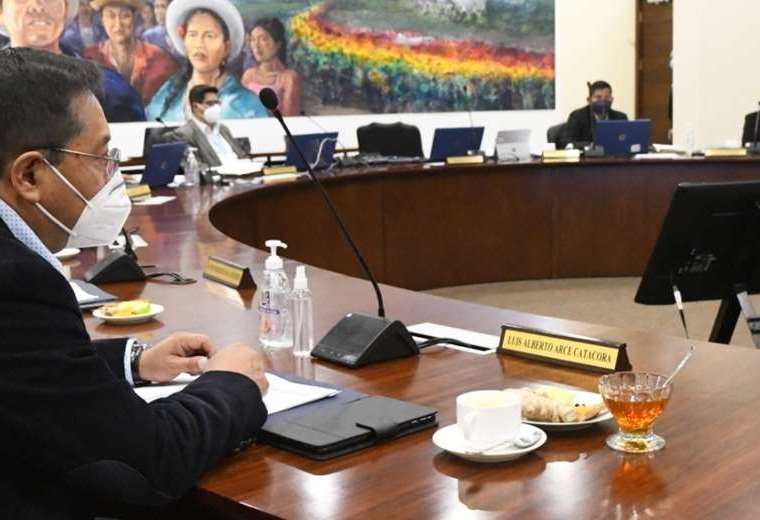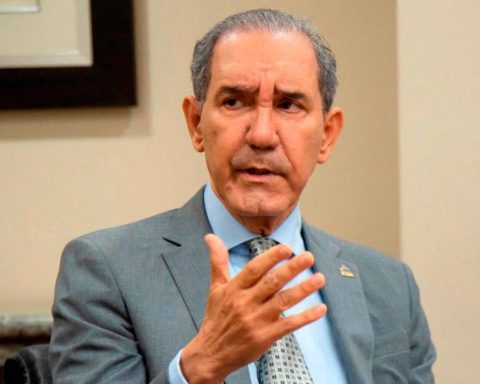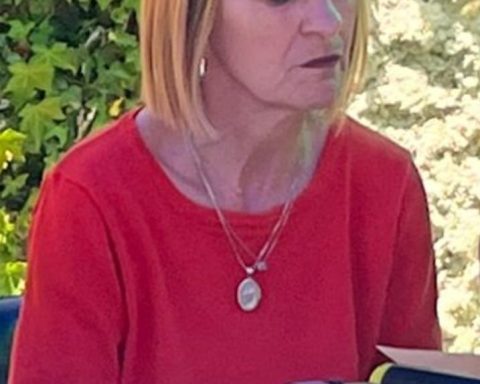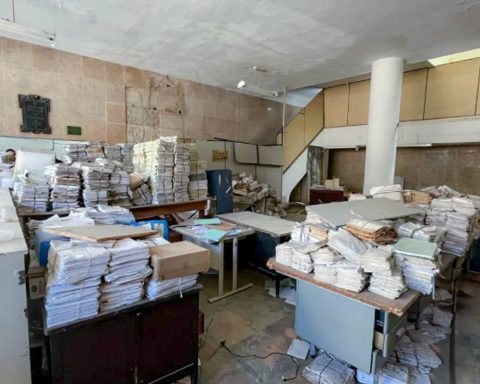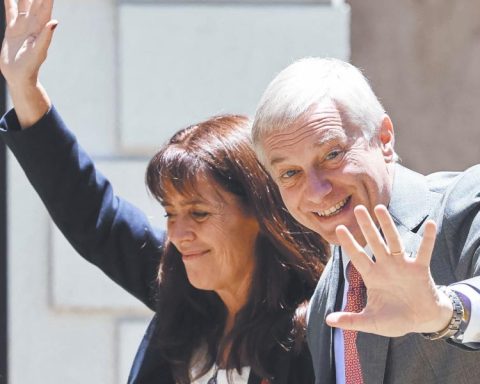The Whale Conservation Institute (ICB) is a civil non-profit organization that, for more than 25 years, has been dedicated to promoting, through research and education, the conservation of whales, particularly the southern right whale.
The Whale Conservation Institute was born after learning about the project that Dr. Roger Payne, biologist and founder of the Ocean Alliance, was developing with the southern right whale in the Valdés Peninsula, and the interest of a group of people, including Roxana Schteinbarg, founder of the ICB and coordinator of the whale conservation program the organization.
Dr. Payne had discovered that southern right whales can be identified from the pattern of calluses on their heads, thus starting a program to photo-identify the whales, inspiring Schteinbarg and others to follow in his footsteps and support his work from Whale Conservation Institute.
However, in the midst of the investigations they began to carry out, they realized that there was a lot to do in the field of education and in the incidence of public policies, as the coordinator of the whale conservation program commented in an interview for Minuto Argentina. .
In this way, and given the imminent need to take action to promote, from different areas, the protection and conservation of cetaceans, the organization gradually grew and, after so many years of work, has become one of the main national and international conservation references.
Always supported by scientific research, the ICB has managed to promote, through different educational programs, local and regional strategies for the conservation of whales and, especially, the southern right whale.
In general, cetaceans are essential for marine ecosystems, as they help maintain the health of the oceans; This is because their feces are rich in iron, nitrogen and other nutrients, which act as fertilizers in the sea, which in turn helps increase the production of algae and other organisms that are used as food by hundreds of other species.
In the case of Argentina, the national coasts are one of the most important breeding and breeding areas for the southern right whale in the southern hemisphere, which is undoubtedly vital for its conservation, since, before receiving protection in 1935, they were about to become extinct due to indiscriminate industrial fishing.
Even the name “right whale” comes from the American whalers who named them that way, because they considered them the right whales to kill.

Although today there are few countries that continue to fish for cetaceans, there are other threats that put them at risk, including pollution, entanglement in fishing nets, collisions with ships, as well as chemical and noise pollution.
Likewise, climate change has become one of the main threats to these species, since as the oceans warm up and the glaciers melt, their food source is affected, especially krill.
These crustaceans reproduce in the Antarctic areas and part of their reproductive process takes place under the ice caps, therefore, if the glaciers melt, there is less krill, and in turn less food source for the whales, explains the interview specialist for this newspaper.

“This is very serious, our studies show that whales have a fidelity to feeding areas. Mothers teach their young where to feed. When they start their lives as independent juveniles, they go to those same areas where their mothers taught them and, if due to climate change or the krill fishery, they do not find food, they have no chance of surviving.”
Although climate change is a risk for these species, paradoxically, cetaceans also help reduce the negative effects of global warming, since they have the ability to absorb huge amounts of carbon dioxide into their bodies.
According to official data, it is estimated that whales retain more than 33 tons of CO2 during their entire lives; even dead, their bodies remain at the bottom of the oceans with all that carbon dioxide. In other words, what a whale achieves would be equivalent to what 1,000 trees do, so they are great allies to reduce the climate crisis.
In addition, the whales themselves are important and essential for marine life and to ensure balance in these ecosystems. Therefore, through the different programs carried out by the organization, they can identify what these threats are and promote different strategies to guarantee their conservation.
Several of these projects are advanced by the ICB collaboratively with other national and international institutions, where they work, for example, on increasing the surface area and effectiveness of marine protected areas, since “Today it is key to protect critical habitats”according to Schteinbarg, in dialogue for this newspaper.
In addition, they work to mitigate threats such as plastic marine litter, on which it is estimated that 12.7 million tons of plastic end up in the oceans each year, which affects not only marine life, but also human life.

Regarding the topic, ICB It is carrying out a circular economy project to recover fishing nets when they reach their useful life, in order to prevent them from ending up in the oceans, and they train the fishing sector on the risks of pollution generated by plastic waste in fishing activities.
Likewise, the organization, through research, seeks to publicize the risks of hydrocarbon exploration in the Argentine sea, since the areas where tenders are held are very important for whales and other species.
Seismic exploration is risky, as it generates high levels of noise pollution. Even experts refer that “it constitutes the second largest contributor of underwater noise after military and nuclear tests”, which generates physical effects on whales and can even cause death. This is not counting the irreversible damage that an oil spill could cause.

Similarly, the Institute It actively participates in international forums such as the International Whaling Commission, where they promote that all the countries of the region take action against the protection of these species, since it is urgent to guarantee their conservation, otherwise, they will end up becoming extinct, like many other animals.
As for figures, the specialist says that before the industrial fishery, between 70,000 and 80,000 southern right whales were documented in the southern hemisphere, but, due to the different threats they face, the population can be around 18 thousand currentlywhile those registered by the organization are about 5,500 individuals.
For this reason, Schteinbarg stresses that to conserve whales it is also necessary to promote the protection of all natural resources, since everything is connected and healthy oceans are needed to guarantee the survival of these and all marine species, including humans.
Electra’s Migratory Journey
Through Following Ballenas, another of the projects carried out by the organization, it was possible to document for the first time the complete migratory journey of a southern right whale, Electra, who was accompanied by her calf.
Electra was one of the 18 southern right whales to which satellite devices were placed last year while they were in Golfo Nuevo in Península Valdés, Chubut. Thanks to this, it was possible to record that after a journey of 18,087 kilometers, she had returned to the Valdés Peninsula.
This record is not only important for the organization, but also for conservation itself, since knowing in detail the migratory routes of the whales allows us to identify which are the habitats that must be protected.

Consequently, for Electra and for the rest of the southern right whales in Argentina and in the world, the ICB will continue its work with the aim of achieving greater change in favor of the protection of these species, since, as the specialist points out, this is “a mission that never ends”.
Because of this, the Institute has different collaboration campaigns, with which any citizen can make a contribution, which allows the organization to continue with its programs.
One of these campaigns is called ‘Adopt a Whale’, through which, with a monthly donation, you can support the protection of whales from anywhere in the world.
Those interested can choose a whale to adopt, among the group of cetaceans that previously the ICB has selected among its 5,000 registered individuals; each one, as Schteinbarg points out, with its “whaleness”, because, in addition to all of them having unique and particular characteristics, they also have their own life story.
Among some of these whales are Mochita, who bears this name because she is missing the right tip of her caudal (tail) fin, Valentina, who is the founder of a family that has grown for four generations, and there is also Nube, which is the youngest whale on the show.
Through this aid, not only is the permanence of the organization guaranteed, but more studies and campaigns can be carried out to protect these species, because, as the specialist points out, despite how much they have achieved, “much more is needed awareness, much more education and understanding that our lives depend on a healthy planet”, that is why it is urgent to understand that together we all have to manage to save the planet.
